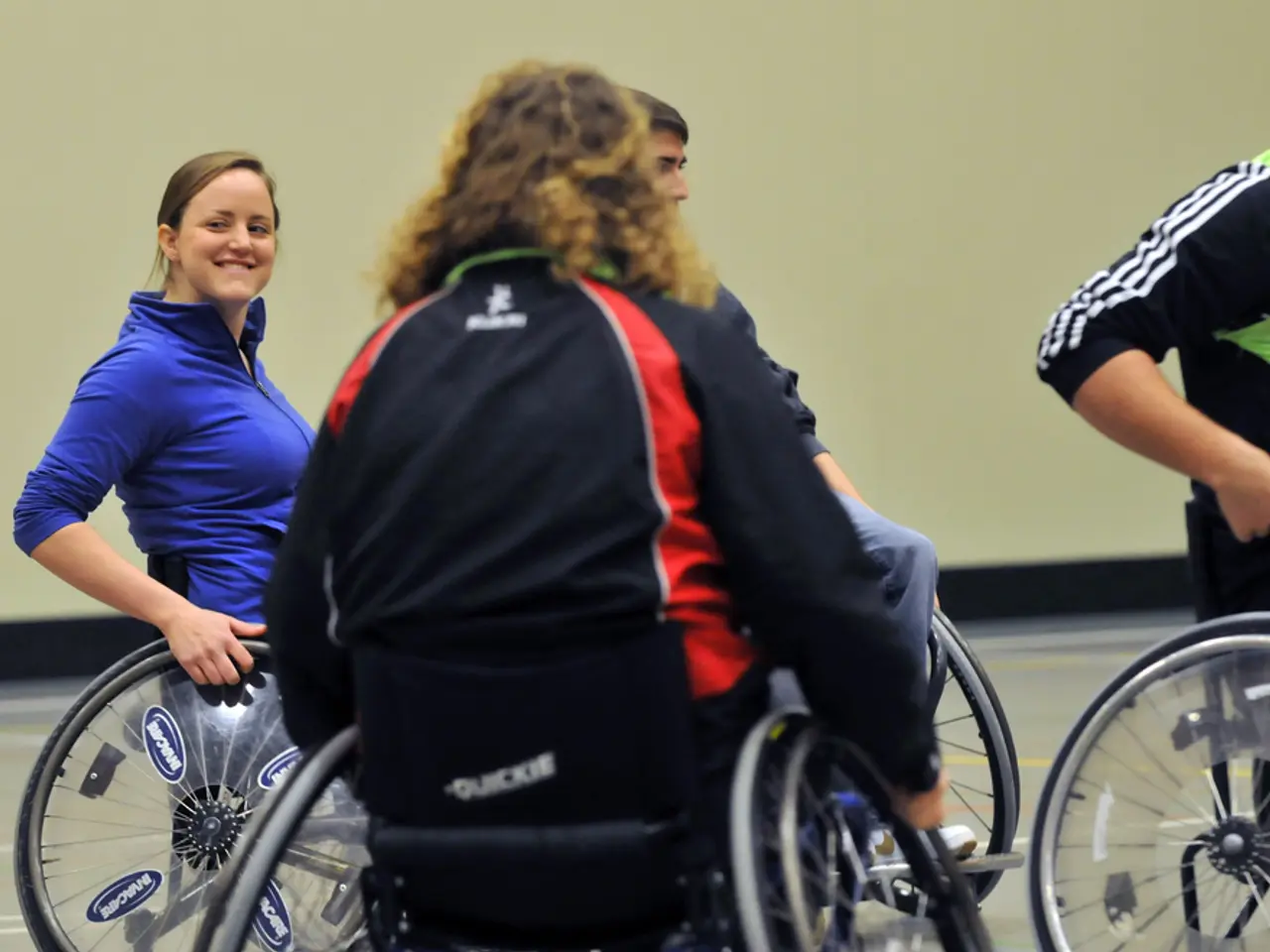Empowering Strategies for Individuals With Disabilities:
In a world where experiences are shared and stories told, creating platforms for storytelling can humanize experiences and foster empathy, bridging the knowledge gap between individuals. This is particularly important when it comes to discussing disability rights, an issue that requires open and accessible conversations for everyone.
A comprehensive approach is essential when empowering individuals with disabilities. This approach addresses various aspects of their lives, including education, community involvement, and technology.
**Education**
Disability Education and Awareness programs challenge negative stereotypes and promote understanding of different disabilities. By providing accurate information and positive representations, these programs create a more inclusive environment. Inclusive practices, such as training programs for educators to support students with disabilities, ensure accessible learning environments and resources. Empowering self-advocacy through tools and resources enhances the ability of individuals with disabilities to communicate their needs effectively.
**Community Involvement**
Promoting inclusion in all aspects of society, including employment and social activities, is crucial. This involves supporting policies and practices that ensure inclusivity. Community engagement through events that celebrate diversity and promote inclusion foster a more accepting society. Legislative advocacy, engaging with lawmakers, is essential for promoting policies that protect the rights of people with disabilities, ensuring equal access and opportunities.
**Technology**
Ensuring digital platforms and tools incorporate accessibility features is key to bridging the digital divide. Providing training and resources to enhance digital literacy among individuals with disabilities enables them to fully participate in the digital world. Adaptive technology solutions, such as audio descriptions, screen readers, and closed captions, facilitate equal participation in digital environments.
**Additional Strategies**
Collaboration and networking with organizations and communities that support people with disabilities can lead to shared resources and strategies. Empowerment through employment, offering accommodations and promoting inclusive hiring practices, supports employment opportunities for individuals with disabilities. Advocating for physical accessibility in public spaces, transportation, and buildings ensures full community participation.
Sharing experiences in peer support groups can combat stereotypes and promote personal development through mentorship. Organizations like Quad care work on developing technological solutions designed to support diverse accessibility needs, making technology more adaptable and useful in everyday life for individuals with disabilities.
Advocacy plays a vital role in ensuring the rights of individuals with disabilities are recognized and respected. Education about disability rights can empower individuals to speak up for themselves and others. Building peer support groups or social outings can facilitate strong social connections among individuals with disabilities, fostering empathy and understanding.
Organizing conversations about inclusivity and friendship in various settings, such as schools and workplaces, can help initiate age-appropriate friendships. Platforms focusing on skill development can bolster confidence and competence in managing devices for individuals with disabilities.
Innovations in assistive technology, such as screen readers and mobility devices, can make tasks easier for individuals with disabilities. Regularly updating one's knowledge about available tech options can facilitate better choices for personalized needs.
By implementing these strategies, we can create a more inclusive society where everyone, regardless of their abilities, can thrive.
- A healthy-diets and nutrition education program, focused on special considerations for individuals with disabilities, can promote their overall health and wellness, enabling them to lead fulfilling lives.
- Integrating mental-health components in disability-awareness programs can address the unique challenges faced by people with disabilities, fostering personal-growth and self-improvement.
- Encouraging fitness-and-exercise programs that cater to individuals with disabilities can positively impact their mental health, as well as contribute to their physical well-being.
- Advocating for career-development resources tailored to people with disabilities, including job training and accessible job-search platforms, can lead to increased financial independence and empowerment.




